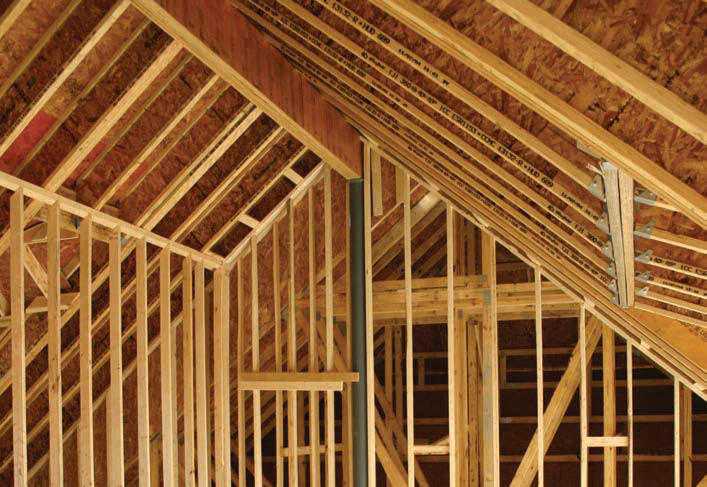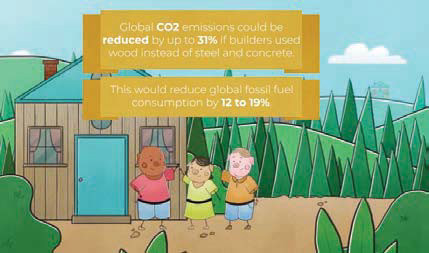A global shift in wood usage
8 February 2019Our guest expert in this issue is, once again, Dr Morwenna Spear of the BioComposites Centre in Bangor, North Wales, UK
There was a surge in interest in wood products – and news stories about timber and sequestered carbon in buildings – around the time of the COP 24 (the 24th Conference of the Parties to the United Nations Framework Convention on Climate Change) meeting in Poland, last December.
The UNECE released a Youtube video of the Three Little Pigs & Climate Change – the benefits of wood as a low-emission material. So how might this affect the panel industry?
In the December issue, my Technically Speaking column demonstrated data at a house level, where wood based panels comprise one quarter of the structural wood elements in an open panel timber frame dwelling.
The OSB content may be higher in closed panel systems, or in structurally insulated panels. So there will be a strong demand for OSB and, in some regions, structural plywood, if construction policies shift as a result of government interest in wood in climate change.
Some very useful reports in this area indicate existing policies adopted by different regions and nations to favour the use of more timber and biomass-based materials in construction. One is Embodied Carbon of Buildings and Infrastructure, published by Naturally Wood in Canada in 2017. Another was published in 2016 by the FAO and UNECE: Promoting Sustainable Building Materials and the Implications on the use of Wood in Buildings.
Both highlight case studies from Europe and North America, where wood in construction is increasingly recognised. For example, British Columbia’s Wood First Act (2009); and required quantities of timber per building in France (2009) and Switzerland (2017).
A more recent report from the European Forestry Institute highlighted the substitution effect of wood based materials in structures, due to lower embodied carbon in those materials. This is in addition to the harvested wood products sink, ie the stored sequestered carbon within the timber and wood based panel elements.
What are the implications for this rapidly developing interest?
The most obvious one is a change in the demand for, and the price of, timber. In particular, there is likely to be competition for the small roundwood and industrial roundwood; and potentially a need to prioritise feedstocks into specific applications.
For example, OSB mills are more reliant on roundwood than other panel mills. Whether this is decided by the market, or by interventions in different nations, will be very interesting.
Some panel mills are already expressing greater interest in forest creation, due to the economics of secure access to future feedstocks. The knock-on effect may also be policy shifts relating to forest planting, or action by the industry to establish long-term supply agreements.
Speed is another element, which may increase pressure due to the need to act now to achieve a 1.5°C scenario: The IPCC suggests that global man-made CO2 emissions must decrease by 45% by 2030 to limit warming to this level.
Luckily, forest creation, and the storage of sequestered carbon within the built environment, are complementary actions and both deliver a benefit: one during growth; and one by the time for which the biogenic carbon is stored.
The additional benefit, relating to reducing emissions compared to alternative building systems, may however be the element to which the construction sector pays the greatest attention.
At the project level, their objective must shift from delivery of product at lowest cost, to delivery on budget, with the best balance of carbon emissions in the capital, and in the operational phase. Both these aspects are increasingly well understood; and many timber systems perform excellently in both areas.


